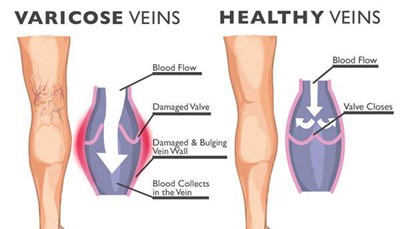What are varicose veins?
Varicose veins are ‘bulging’ and often uncomfortable veins which can be visualised in the legs just below the skin surface. Symptoms of aching are common, especially after standing for prolonged periods. If varicose veins get very bad they can cause problems such as changes to the colour and texture of the skin, and even ulceration. In varicose veins, the valves which normally prevent blood from flowing back down the legs fail to function properly, causing backflow of blood, and stretching of the veins as they try to accommodate this extra blood volume.
During a Vascular Lab assessment for varicose veins, cool gel will be applied to your legs with an ultrasound probe. The veins in the affected leg or legs will be imaged, and the flow within them examined to assess where about the valves are malfunctioning.
The Vascular Consultant will then use the report we write to help plan any treatment or surgery you may require, to target the specific sites where the valves are not working properly and help resolve your symptoms. The surgeon can use a number of different techniques to remove or reduce the effects off the faulty veins. If the problematic varicose veins are removed, the blood flow is re routed up the deep veins in your leg by your body.
Diagram of Varicose Veins

 In this section
In this section